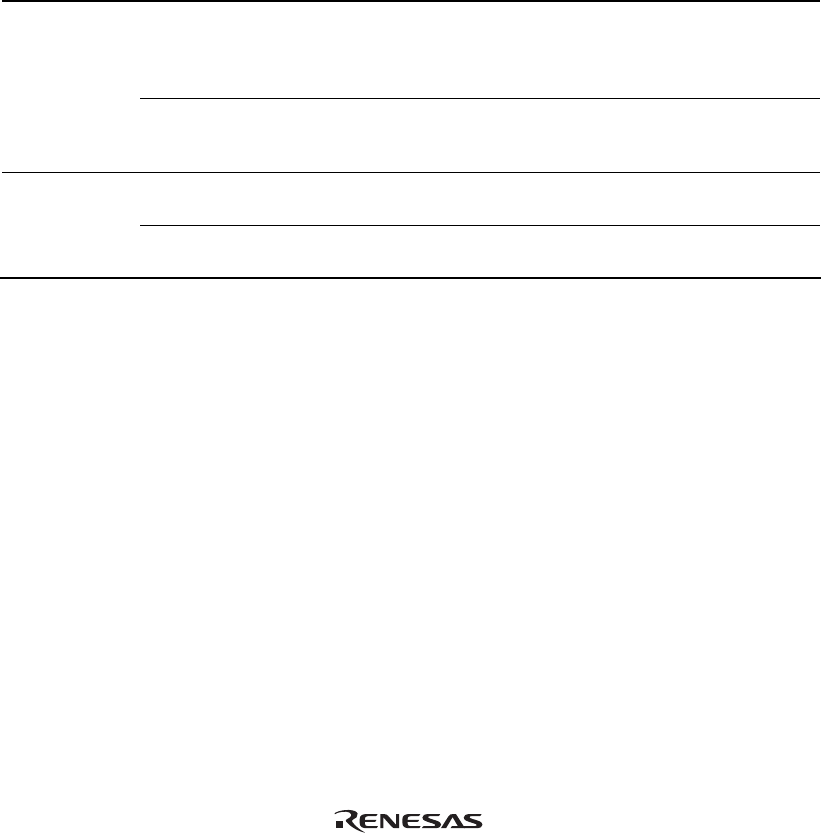
32
Memory Output Trace Functions: This function is activated by selecting the [Use Memory
trace] radio button in the [Trace type] group box of the [Trace mode] page.
In this function, write the trace data in the specified user memory range.
Specify the start address to output a trace for the [Start] edit box in the [User memory area] group
box, and the end address for the [End Address] edit box. Set the trace condition to be used.
Table 2.10 shows the memory-output trace acquisition mode that can be set in each trace function.
Table 2.10 Memory-Output Trace Acquisition Mode
Type Mode Description
Continuous
trace occurs
Realtime trace When the next branch occurs while the trace information is
being output, all the information may not be output. The user
program can be executed in realtime, but some trace
information will be lost.
Non realtime trace When the next branch occurs while the trace information is
being output, the CPU stops operations until the information
is output. The user program is not executed in realtime.
Trace buffer
full
Trace continue This function overwrites the oldest trace information to store
the latest trace information.
Trace stop After the trace buffer becomes full, the trace information is no
longer acquired. The user program is continuously executed.


















